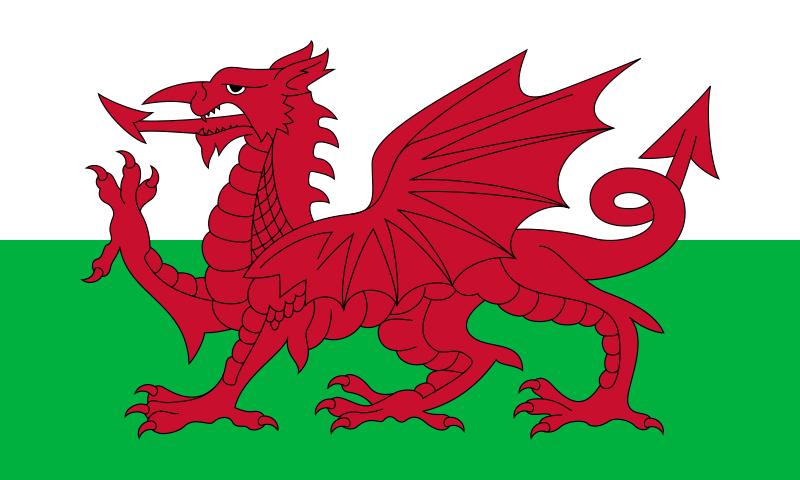Adam H. Sparks :rstats:<p>I love it when a plan comes together. Seeing work from colleagues I've worked with in the past in the US publishing this, <a href="https://apsjournals.apsnet.org/doi/10.1094/PHYTO-11-17-0386-R" rel="nofollow noopener" translate="no" target="_blank"><span class="invisible">https://</span><span class="ellipsis">apsjournals.apsnet.org/doi/10.</span><span class="invisible">1094/PHYTO-11-17-0386-R</span></a> and applying it to some analyses here in Australia on a much smaller dataset worked! <a href="https://rstats.me/tags/FunctionalDataAnalysis" class="mention hashtag" rel="nofollow noopener" target="_blank">#<span>FunctionalDataAnalysis</span></a> <a href="https://rstats.me/tags/PlantDisease" class="mention hashtag" rel="nofollow noopener" target="_blank">#<span>PlantDisease</span></a> <a href="https://rstats.me/tags/Modelling" class="mention hashtag" rel="nofollow noopener" target="_blank">#<span>Modelling</span></a> <a href="https://rstats.me/tags/Epidemiology" class="mention hashtag" rel="nofollow noopener" target="_blank">#<span>Epidemiology</span></a> <a href="https://rstats.me/tags/Agriculture" class="mention hashtag" rel="nofollow noopener" target="_blank">#<span>Agriculture</span></a> <a href="https://rstats.me/tags/PlantPathology" class="mention hashtag" rel="nofollow noopener" target="_blank">#<span>PlantPathology</span></a></p>
toot.wales is one of the many independent Mastodon servers you can use to participate in the fediverse.

We are the Open Social network for Wales and the Welsh, at home and abroad! Y rhwydwaith cymdeithasol annibynnol i Gymru, wedi'i bweru gan Mastodon!
Administered by:
Server stats:
586active users
toot.wales: About · Status · Profiles directory · Privacy policy
Mastodon: About · Get the app · Keyboard shortcuts · View source code · v4.4.3
#PlantPathology
0 posts · 0 participants · 0 posts today
RachelW<p>I spotted this interesting gall on a fireweed plant in my garden today. I wonder what it will grow up into. <a href="https://ieji.de/tags/bloomscrolling" class="mention hashtag" rel="nofollow noopener" target="_blank">#<span>bloomscrolling</span></a> <a href="https://ieji.de/tags/botany" class="mention hashtag" rel="nofollow noopener" target="_blank">#<span>botany</span></a> <a href="https://ieji.de/tags/PlantPathology" class="mention hashtag" rel="nofollow noopener" target="_blank">#<span>PlantPathology</span></a></p>
Adam H. Sparks :rstats:<p>My latest paper is now available as a First Look in Phytopathology, "Clonal Expansion from Standing Genetic Variation Underpins the Evolution of Curtobacterium flaccumfaciens pv. flaccumfaciens in Australia". So I've got that going for me, which is nice. </p><p><a href="https://doi.org/10.1094/PHYTO-01-25-0032-R" rel="nofollow noopener" translate="no" target="_blank"><span class="invisible">https://</span><span class="ellipsis">doi.org/10.1094/PHYTO-01-25-00</span><span class="invisible">32-R</span></a></p><p><a href="https://rstats.me/tags/PlantPathology" class="mention hashtag" rel="nofollow noopener" target="_blank">#<span>PlantPathology</span></a> <a href="https://rstats.me/tags/Academia" class="mention hashtag" rel="nofollow noopener" target="_blank">#<span>Academia</span></a></p>
Timothy Schwinghamer (he/him)<p>🚨 First Look! My latest peer-reviewed co-authorship is now online in Phytopathology Journal 🧬🌾</p><p>📰 Fusarium avenaceum isolates from pea, wheat, & lentil were tested on these three host crops. Pea-derived isolates were the most "aggressive," which motivated our conclusion that inclusion of pea in a crop rotation can increase the incidence & severity of head blight in wheat.</p><p>🔗 <a href="https://doi.org/10.1094/PHYTO-03-25-0120-R" rel="nofollow noopener" translate="no" target="_blank"><span class="invisible">https://</span><span class="ellipsis">doi.org/10.1094/PHYTO-03-25-01</span><span class="invisible">20-R</span></a></p><p><a href="https://mstdn.social/tags/PlantPathology" class="mention hashtag" rel="nofollow noopener" target="_blank">#<span>PlantPathology</span></a> <a href="https://mstdn.social/tags/Fusarium" class="mention hashtag" rel="nofollow noopener" target="_blank">#<span>Fusarium</span></a> <a href="https://mstdn.social/tags/Agroecology" class="mention hashtag" rel="nofollow noopener" target="_blank">#<span>Agroecology</span></a> <a href="https://mstdn.social/tags/OpenScience" class="mention hashtag" rel="nofollow noopener" target="_blank">#<span>OpenScience</span></a></p>
Robot Diver<p>I'd consider myself a fairly well versed gardener. I worked in landscaping and landscape design for years, but I'm stumped when it comes to my current red currant issue. (So much pun.) I have two that were planted in late Feb/ late March. </p><p>Currant 1 flourished, put on lots of new growth and appeared to be doing well.</p><p>Currant 2 went in a little later due to logistics but has grown well. </p><p>Currant 2 definitely has leafhoppers, but no signs of damage and is now double the size of Currant 1 and thriving.</p><p>Currant 1 is an entirely different story. We had a windstorm and some of the new growth got whipped around and snapped. I trimmed the broken growth with clean secateurs (alcohol and all). It has gone from thriving to barely surviving since then. I can't find any pests and the only sign of any is a couple of leaves munched by either mason or leafcutter bees and maybe earwigs. The leaves grow and then it's like something has lopped them off halfway down the stem of the leaf. I'm starting to notice varigated mottling on some new growth and distortion of new leaves. Is this fungal? Viral? I've never seen it before. Both are partial shade with new potting soil. Zone 8.</p><p>Thoughts? We don't live in an area affected by pine blister if that helps. </p><p><a href="https://starlite.rodeo/tags/gardening" class="mention hashtag" rel="nofollow noopener" target="_blank">#<span>gardening</span></a> <a href="https://starlite.rodeo/tags/growYourOwn" class="mention hashtag" rel="nofollow noopener" target="_blank">#<span>growYourOwn</span></a> <a href="https://starlite.rodeo/tags/plantPathology" class="mention hashtag" rel="nofollow noopener" target="_blank">#<span>plantPathology</span></a></p>
Megan Lynch (she/her)<p>Just as I was saying to the screen "because chestnut blight decimated the American Chestnut", Harper was looking it up on the internet and finding out the same thing...</p><p><a href="https://www.youtube.com/watch?v=kaeENcIoLAA" rel="nofollow noopener" translate="no" target="_blank"><span class="invisible">https://www.</span><span class="ellipsis">youtube.com/watch?v=kaeENcIoLA</span><span class="invisible">A</span></a></p><p><a href="https://ecoevo.social/tags/PlantPathology" class="mention hashtag" rel="nofollow noopener" target="_blank">#<span>PlantPathology</span></a> <a href="https://ecoevo.social/tags/Nuts" class="mention hashtag" rel="nofollow noopener" target="_blank">#<span>Nuts</span></a> <a href="https://ecoevo.social/tags/Holidays" class="mention hashtag" rel="nofollow noopener" target="_blank">#<span>Holidays</span></a> <a href="https://ecoevo.social/tags/Food" class="mention hashtag" rel="nofollow noopener" target="_blank">#<span>Food</span></a> <a href="https://ecoevo.social/tags/Italy" class="mention hashtag" rel="nofollow noopener" target="_blank">#<span>Italy</span></a></p>
Lukas VFN 🇪🇺<p>Historical outbreaks of <a href="https://scholar.social/tags/CoffeeWilt" class="mention hashtag" rel="nofollow noopener" target="_blank">#<span>CoffeeWilt</span></a> disease linked to gene transfer from another fungus <a href="https://phys.org/news/2024-12-historical-outbreaks-coffee-wilt-disease.html" rel="nofollow noopener" translate="no" target="_blank"><span class="invisible">https://</span><span class="ellipsis">phys.org/news/2024-12-historic</span><span class="invisible">al-outbreaks-coffee-wilt-disease.html</span></a></p><p>Horizontal transfers between fungal <a href="https://scholar.social/tags/Fusarium" class="mention hashtag" rel="nofollow noopener" target="_blank">#<span>Fusarium</span></a> species contributed to successive outbreaks of <a href="https://scholar.social/tags/coffee" class="mention hashtag" rel="nofollow noopener" target="_blank">#<span>coffee</span></a> wilt disease: Lily Peck et al. <a href="https://journals.plos.org/plosbiology/article?id=10.1371/journal.pbio.3002480" rel="nofollow noopener" translate="no" target="_blank"><span class="invisible">https://</span><span class="ellipsis">journals.plos.org/plosbiology/</span><span class="invisible">article?id=10.1371/journal.pbio.3002480</span></a></p><p>"The <a href="https://scholar.social/tags/fungus" class="mention hashtag" rel="nofollow noopener" target="_blank">#<span>fungus</span></a> that causes coffee wilt disease repeatedly took up segments of DNA from a related fungal pathogen, which contributed to successive outbreaks of the disease."</p><p><a href="https://scholar.social/tags/Fungi" class="mention hashtag" rel="nofollow noopener" target="_blank">#<span>Fungi</span></a> <a href="https://scholar.social/tags/PlantPathology" class="mention hashtag" rel="nofollow noopener" target="_blank">#<span>PlantPathology</span></a> <a href="https://scholar.social/tags/LGT" class="mention hashtag" rel="nofollow noopener" target="_blank">#<span>LGT</span></a> <a href="https://scholar.social/tags/HGT" class="mention hashtag" rel="nofollow noopener" target="_blank">#<span>HGT</span></a> <a href="https://scholar.social/tags/Evolution" class="mention hashtag" rel="nofollow noopener" target="_blank">#<span>Evolution</span></a> <a href="https://scholar.social/tags/Biology" class="mention hashtag" rel="nofollow noopener" target="_blank">#<span>Biology</span></a></p>
The Global Plant Council<p>Study Analyzes Potato-Pathogen ‘Arms Race’ After Irish Famine</p><p>In an examination of the genetic material found in historic potato leaves researchers reveal more about the tit-for-tat evolutionary changes occurring in both potato plants and the pathogen that caused the 1840s Irish potato famine. </p><p><a href="https://globalplantcouncil.org/study-analyzes-potato-pathogen-arms-race-after-irish-famine/" rel="nofollow noopener" translate="no" target="_blank"><span class="invisible">https://</span><span class="ellipsis">globalplantcouncil.org/study-a</span><span class="invisible">nalyzes-potato-pathogen-arms-race-after-irish-famine/</span></a> <a href="https://mastodon.social/tags/PlantHealth" class="mention hashtag" rel="nofollow noopener" target="_blank">#<span>PlantHealth</span></a> <a href="https://mastodon.social/tags/PlantScience" class="mention hashtag" rel="nofollow noopener" target="_blank">#<span>PlantScience</span></a> <a href="https://mastodon.social/tags/PlantSci" class="mention hashtag" rel="nofollow noopener" target="_blank">#<span>PlantSci</span></a> <a href="https://mastodon.social/tags/Potato" class="mention hashtag" rel="nofollow noopener" target="_blank">#<span>Potato</span></a> <a href="https://mastodon.social/tags/Research" class="mention hashtag" rel="nofollow noopener" target="_blank">#<span>Research</span></a> <a href="https://mastodon.social/tags/Science" class="mention hashtag" rel="nofollow noopener" target="_blank">#<span>Science</span></a> <a href="https://mastodon.social/tags/Plants" class="mention hashtag" rel="nofollow noopener" target="_blank">#<span>Plants</span></a> <a href="https://mastodon.social/tags/PlantPathology" class="mention hashtag" rel="nofollow noopener" target="_blank">#<span>PlantPathology</span></a> <a href="https://mastodon.social/tags/Crops" class="mention hashtag" rel="nofollow noopener" target="_blank">#<span>Crops</span></a></p>
Megan Lynch (she/her)<p>First report of Alternaria alternata causing black spots in carob (Ceratonia siliqua) leaves in Europe <a href="https://ecoevo.social/tags/PlantPathology" class="mention hashtag" rel="nofollow noopener" target="_blank">#<span>PlantPathology</span></a> <a href="https://ecoevo.social/tags/Gardening" class="mention hashtag" rel="nofollow noopener" target="_blank">#<span>Gardening</span></a> <a href="https://ecoevo.social/tags/Botany" class="mention hashtag" rel="nofollow noopener" target="_blank">#<span>Botany</span></a> <span class="h-card" translate="no"><a href="https://a.gup.pe/u/gardening" class="u-url mention" rel="nofollow noopener" target="_blank">@<span>gardening</span></a></span> <span class="h-card" translate="no"><a href="https://a.gup.pe/u/plantscience" class="u-url mention" rel="nofollow noopener" target="_blank">@<span>plantscience</span></a></span> </p><p><a href="https://link.springer.com/article/10.1007/s42161-024-01741-w" rel="nofollow noopener" translate="no" target="_blank"><span class="invisible">https://</span><span class="ellipsis">link.springer.com/article/10.1</span><span class="invisible">007/s42161-024-01741-w</span></a></p>
Megan Lynch (she/her)<p>US Animal and Plant Health Inspection Service (APHIS) is soliciting informed public comment on a draft list of taxa that are or that contain plant pests.</p><p>Comments will be accepted through October 7, 2024.</p><p><a href="https://www.regulations.gov/docket/APHIS-2024-0046" rel="nofollow noopener" translate="no" target="_blank"><span class="invisible">https://www.</span><span class="ellipsis">regulations.gov/docket/APHIS-2</span><span class="invisible">024-0046</span></a></p><p><span class="h-card" translate="no"><a href="https://a.gup.pe/u/plantscience" class="u-url mention" rel="nofollow noopener" target="_blank">@<span>plantscience</span></a></span> <a href="https://ecoevo.social/tags/PlantPathology" class="mention hashtag" rel="nofollow noopener" target="_blank">#<span>PlantPathology</span></a></p>
Chuckling Duck<p>Any fruit pest/disease folks on here? Does this look like damage from the Eastern Cherry Fruit Fly? On sour cherries in Manitoba, Canada. <a href="https://mstdn.ca/tags/FruitPests" class="mention hashtag" rel="nofollow noopener" target="_blank">#<span>FruitPests</span></a> <a href="https://mstdn.ca/tags/PlantPests" class="mention hashtag" rel="nofollow noopener" target="_blank">#<span>PlantPests</span></a> <a href="https://mstdn.ca/tags/phytopathology" class="mention hashtag" rel="nofollow noopener" target="_blank">#<span>phytopathology</span></a> <a href="https://mstdn.ca/tags/Rhagoletis" class="mention hashtag" rel="nofollow noopener" target="_blank">#<span>Rhagoletis</span></a> <a href="https://mstdn.ca/tags/tephritidae" class="mention hashtag" rel="nofollow noopener" target="_blank">#<span>tephritidae</span></a> <a href="https://mstdn.ca/tags/Diptera" class="mention hashtag" rel="nofollow noopener" target="_blank">#<span>Diptera</span></a> <a href="https://mstdn.ca/tags/PlantPathology" class="mention hashtag" rel="nofollow noopener" target="_blank">#<span>PlantPathology</span></a></p>
JuneSim63<p>"It turns out that millions of elms still exist across the UK, particularly in southern England, as small hedgerow shrubs. In fact, these stunted relics are, according to one government plant pathologist, more numerous than the pre-epidemic elm population"</p><p><a href="https://mstdn.social/tags/Elms" class="mention hashtag" rel="nofollow noopener" target="_blank">#<span>Elms</span></a> <a href="https://mstdn.social/tags/Trees" class="mention hashtag" rel="nofollow noopener" target="_blank">#<span>Trees</span></a> <a href="https://mstdn.social/tags/Biodiversity" class="mention hashtag" rel="nofollow noopener" target="_blank">#<span>Biodiversity</span></a> <a href="https://mstdn.social/tags/PlantPathology" class="mention hashtag" rel="nofollow noopener" target="_blank">#<span>PlantPathology</span></a> <a href="https://mstdn.social/tags/DutchElmDisease" class="mention hashtag" rel="nofollow noopener" target="_blank">#<span>DutchElmDisease</span></a></p><p>Disease has killed most of the UK’s elm trees since the 1960s – but there are signs they may be making a comeback<br><a href="https://theconversation.com/disease-has-killed-most-of-the-uks-elm-trees-since-the-1960s-but-there-are-signs-they-may-be-making-a-comeback-231778" rel="nofollow noopener" translate="no" target="_blank"><span class="invisible">https://</span><span class="ellipsis">theconversation.com/disease-ha</span><span class="invisible">s-killed-most-of-the-uks-elm-trees-since-the-1960s-but-there-are-signs-they-may-be-making-a-comeback-231778</span></a></p>
Jake<p>Peronospora fulva new to Ireland yesterday in the Lagan Valley. Much more subtle than when I found it last week in Cambourne, Cambridgeshire (pic 2).<br><a href="https://ecoevo.social/tags/wildbelfast" class="mention hashtag" rel="nofollow noopener" target="_blank">#<span>wildbelfast</span></a> <a href="https://ecoevo.social/tags/plantpathology" class="mention hashtag" rel="nofollow noopener" target="_blank">#<span>plantpathology</span></a> <a href="https://ecoevo.social/tags/oomycetes" class="mention hashtag" rel="nofollow noopener" target="_blank">#<span>oomycetes</span></a></p>
Omid Shenavar<p>So, let me give you a short bio: I am an M.Sc. graduate in phytobacteriology with a strong interest in the phylogeny and taxonomy of bacteria—a world that I find more fascinating than anything humans have actually made on Earth!</p><p>Furthermore, another interest of mine is the Linux/GNU world, as it teaches me something new every day and opens new doors for me.<br><a href="https://mstdn.science/tags/Plantpathology" class="mention hashtag" rel="nofollow noopener" target="_blank">#<span>Plantpathology</span></a> <a href="https://mstdn.science/tags/Plantbacteriology" class="mention hashtag" rel="nofollow noopener" target="_blank">#<span>Plantbacteriology</span></a> <a href="https://mstdn.science/tags/Linux" class="mention hashtag" rel="nofollow noopener" target="_blank">#<span>Linux</span></a> <a href="https://mstdn.science/tags/FOSS" class="mention hashtag" rel="nofollow noopener" target="_blank">#<span>FOSS</span></a> <a href="https://mstdn.science/tags/Fedora" class="mention hashtag" rel="nofollow noopener" target="_blank">#<span>Fedora</span></a></p>
Bevan Weir<p>Always a nice surprise to get a mysterious package of diseased plant material in the mail. This one is likely Pseudomonas savastanoi pv. nerii causing galls on oleander leaves 🧪<a href="https://mastodon.nz/tags/plantpathology" class="mention hashtag" rel="nofollow noopener" target="_blank">#<span>plantpathology</span></a></p>
The Global Plant Council<p>Scientists develop rapid gene-screening platform to boost disease resistance in crops </p><p>Scientists have achieved a breakthrough in molecular plant pathology, marking a technological leap forward for breeding durable disease-resistant crops. </p><p><a href="https://globalplantcouncil.org/scientists-develop-rapid-gene-screening-platform-to-boost-disease-resistance-in-crops/" rel="nofollow noopener" translate="no" target="_blank"><span class="invisible">https://</span><span class="ellipsis">globalplantcouncil.org/scienti</span><span class="invisible">sts-develop-rapid-gene-screening-platform-to-boost-disease-resistance-in-crops/</span></a> via CSIRO <a href="https://mastodon.social/tags/PlantHealth" class="mention hashtag" rel="nofollow noopener" target="_blank">#<span>PlantHealth</span></a> <a href="https://mastodon.social/tags/PlantScience" class="mention hashtag" rel="nofollow noopener" target="_blank">#<span>PlantScience</span></a> <a href="https://mastodon.social/tags/PlantSci" class="mention hashtag" rel="nofollow noopener" target="_blank">#<span>PlantSci</span></a> <a href="https://mastodon.social/tags/Science" class="mention hashtag" rel="nofollow noopener" target="_blank">#<span>Science</span></a> <a href="https://mastodon.social/tags/Crops" class="mention hashtag" rel="nofollow noopener" target="_blank">#<span>Crops</span></a> <a href="https://mastodon.social/tags/PlantPathology" class="mention hashtag" rel="nofollow noopener" target="_blank">#<span>PlantPathology</span></a></p>
Omid Shenavar<p>So, let me give you a short bio: I am an M.Sc. graduate in phytobacteriology with a strong interest in the phylogeny and taxonomy of bacteria—a world that I find more fascinating than anything humans have actually made on Earth!</p><p>Furthermore, another interest of mine is the Linux/GNU world, as it teaches me something new every day and opens new doors for me.<br><a href="https://sciences.social/tags/Plantpathology" class="mention hashtag" rel="nofollow noopener" target="_blank">#<span>Plantpathology</span></a> <a href="https://sciences.social/tags/Plantbacteriology" class="mention hashtag" rel="nofollow noopener" target="_blank">#<span>Plantbacteriology</span></a> <a href="https://sciences.social/tags/Xanthomonas" class="mention hashtag" rel="nofollow noopener" target="_blank">#<span>Xanthomonas</span></a> <a href="https://sciences.social/tags/Linux" class="mention hashtag" rel="nofollow noopener" target="_blank">#<span>Linux</span></a> <a href="https://sciences.social/tags/FOSS" class="mention hashtag" rel="nofollow noopener" target="_blank">#<span>FOSS</span></a> <a href="https://sciences.social/tags/Fedora" class="mention hashtag" rel="nofollow noopener" target="_blank">#<span>Fedora</span></a></p>
Garth Coghlan<p>Does anyone know what <a href="https://aus.social/tags/PlantDisease" class="mention hashtag" rel="nofollow noopener" target="_blank">#<span>PlantDisease</span></a> is attacking my tomatoes?</p><p>The leaves are developing yellow blotches that start to crisp at the edges. Some of them have a lesion in the middle. And a very few have some dark spots. See pics.</p><p><a href="https://aus.social/tags/gardening" class="mention hashtag" rel="nofollow noopener" target="_blank">#<span>gardening</span></a> <a href="https://aus.social/tags/VegetableGardening" class="mention hashtag" rel="nofollow noopener" target="_blank">#<span>VegetableGardening</span></a> <a href="https://aus.social/tags/PlantPathology" class="mention hashtag" rel="nofollow noopener" target="_blank">#<span>PlantPathology</span></a></p>
Andy Salisbury 🪲🐞🦗🦟🪰🐛🦋<p>Interested in a paid summer studentship @therhs @rhswisley? <a href="https://ecoevo.social/tags/plantpathology" class="mention hashtag" rel="nofollow noopener" target="_blank">#<span>plantpathology</span></a> <a href="https://ecoevo.social/tags/planthealth" class="mention hashtag" rel="nofollow noopener" target="_blank">#<span>planthealth</span></a> <a href="https://ecoevo.social/tags/entomology" class="mention hashtag" rel="nofollow noopener" target="_blank">#<span>entomology</span></a> <a href="https://ecoevo.social/tags/biosecurity" class="mention hashtag" rel="nofollow noopener" target="_blank">#<span>biosecurity</span></a> <a href="https://ecoevo.social/tags/biodiversity" class="mention hashtag" rel="nofollow noopener" target="_blank">#<span>biodiversity</span></a> <a href="https://www.rhs.org.uk/education-learning/qualifications-and-training/work-based-training/plant-health-summer-studentship" rel="nofollow noopener" translate="no" target="_blank"><span class="invisible">https://www.</span><span class="ellipsis">rhs.org.uk/education-learning/</span><span class="invisible">qualifications-and-training/work-based-training/plant-health-summer-studentship</span></a></p>
Megan Lynch (she/her)<p>via Growing the Valley podcast/UCANR extensionist Luke Milliron</p><p>Sacramento Valley Prune News, Fall 2023 </p><p>Rare prune disease spotted in Sacramento Valley in 2023. Learn the signs and report to your farm advisor.</p><p><span class="h-card" translate="no"><a href="https://a.gup.pe/u/plantscience" class="u-url mention" rel="nofollow noopener" target="_blank">@<span>plantscience</span></a></span> </p><p><a href="https://cesutter.ucanr.edu/newsletters/Sacramento_Valley_Prune_News99459.pdf" rel="nofollow noopener" translate="no" target="_blank"><span class="invisible">https://</span><span class="ellipsis">cesutter.ucanr.edu/newsletters</span><span class="invisible">/Sacramento_Valley_Prune_News99459.pdf</span></a> <a href="https://ecoevo.social/tags/Horticulture" class="mention hashtag" rel="nofollow noopener" target="_blank">#<span>Horticulture</span></a> <a href="https://ecoevo.social/tags/Agriculture" class="mention hashtag" rel="nofollow noopener" target="_blank">#<span>Agriculture</span></a> <a href="https://ecoevo.social/tags/PlantPathology" class="mention hashtag" rel="nofollow noopener" target="_blank">#<span>PlantPathology</span></a></p>
TrendingLive feeds
Mastodon is the best way to keep up with what's happening.
Follow anyone across the fediverse and see it all in chronological order. No algorithms, ads, or clickbait in sight.
Create accountLoginDrag & drop to upload

